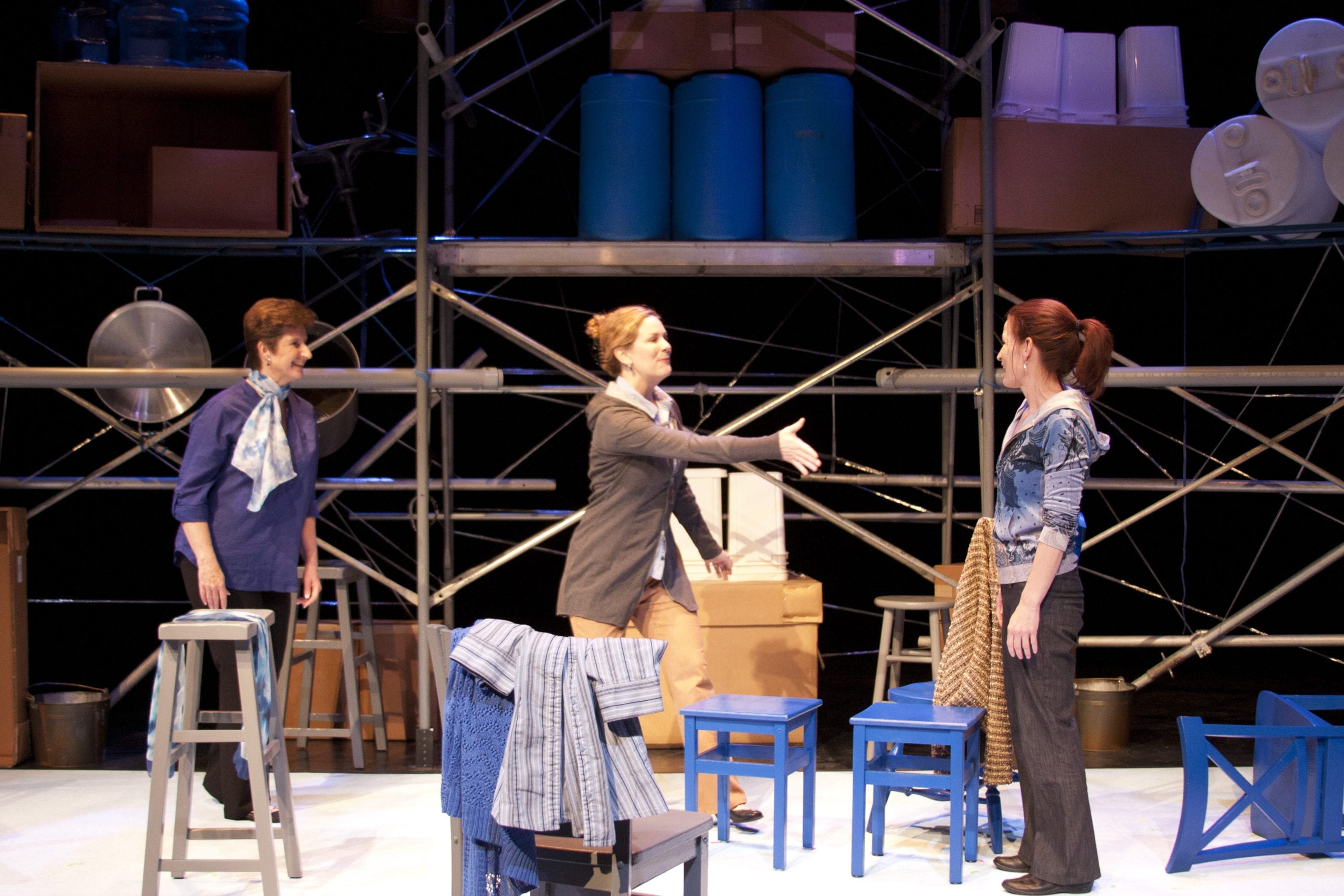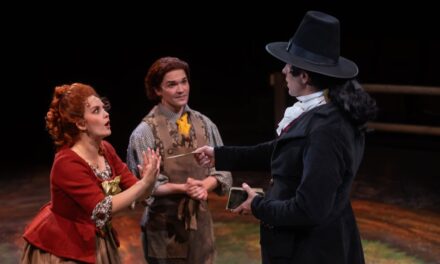CEDAR CITY — With the closing lyrics from SimonFest’s Little Shop of Horrors imploring the world, “whatever you do don’t feed the plant,” perhaps a better way to sing it would be, “whatever you do, go see the plant” and all the talent surrounding the strange tale of Audrey II in the SimonFest Theatre Company production of Little Shop of Horrors.

Show closes August 3, 2019.
Stripped to its bare bones, the plot of Little Shop of Horrors is as ghastly as it is unrealistic. Strange and sad don’t begin to describe the horrors that unfold. Yet somehow when it is rolled up with the beautiful and catchy music and lyrics of Alan Menken and Howard Ashman, it becomes a striking story of humanity and hardship, love, and a hope for redemption.
From the memorable opening lines of the title song to the emotional ups and downs in songs like, “Somewhere That’s Green,” and, “Suddenly Seymour,” the SimonFest Theatre Company production of Little Shop of Horrors had me hooked from beginning to end. Eliza Kay Hall, Stephanie Hernandez, and Rebecca Smith started the show off right as the doo-wop girls telling the sad tale of living down on “Skid Row.” All three women exhibited great vocal skill, but it was Eliza Kay Hall who really showed her chops, belting out her solo like someone with a definite future on the stage.
With raw talent, Taylor Seth Hall stepped into the spotlight in the supportive role as Mr. Mushnik. Seth Hall’s energy and charisma lit up the stage, and after witnessing him in this production as well as in I Hate Hamlet, it was not hard to imagine him moving on to even larger venues in the future.
It simply wouldn’t be a review of Little Shop without addressing the elephant—er, plant—in the room, Audrey II. The giant puppet was the creation of Lee Montgomery and was operated by three different people at different times in the show. Devin Anderson played the voice uttering the disturbing pleas, “Feed me, Seymour, feed me!” Sammy Gaylord took over the physical movements as the plant reached its mammoth size, and Orlando Sham handled the movements of the smaller version of Audrey II. Montgomery’s design worked well as the plant grew from something of unusual botanical interest to a full-fledged, toothy monster. Anderson’s voice matched the plant’s size, and only on occasion were his lines muffled, making it difficult to catch all of his words.
Intermingled with the freakishly fascinating plant was the love story of two young floral shop employees Audrey, played by the endearing Olivia Sham, and Seymour, played by Zane Brady. The only complication: Audrey is already seeing someone, Orin, the masochist parading as a dentist, played by Joseph Price.
As in the production of I Left My Dignity In My Other Purse, Price played multiple roles and managed to be convincing in them all. Unfortunately, the only one that fell a little short was the depiction of Orin the dentist. In this case, it was not so much a lack of ability, but rather the overuse of Price’s talents in the show. Seeing Price in several other roles worked well in the comedy of I Left My Dignity In My Other Purse, but it proved to detract from seeing Orin as the all-out bad guy in Little Shop of Horrors.
Playing opposite the detestable dentist, Olivia Sham made me immediately fall in love with Audrey. In some productions of Little Shop, the Audrey character will go so far overboard with the nasally, ditsy vocal intonations that she will become difficult to listen to and therefore hard to bear. Fortunately, there was no such problem with Olivia Sham’s version of Audrey. Her Audrey was sweet, somewhat pitiable, and yet strong when it mattered most. Her chemistry with Brady’s version of Seymour was believable and engaging—thanks to the strong and natural acting on both sides of the duo.
Despite an overwhelmingly positive show, there were a couple of things that needed to improve, including the balance between the live orchestra and the vocals. Under the direction and piano accompaniment of Dr. Lawrence Johnson, Jordan Nielsen (percussion) and Sean Militscher (bass) added depth to the musical numbers. However, the sound often outweighed the vocalists, making it difficult to catch all the lyrics in some of the songs. In a musical like Little Shop, lyrics are king. Enunciation of lyrics in the music was one other area that could improve. Much of the wit and humor in this musical relies on audiences hearing and understanding each word in the songs. The vocal talent and powerful volume were generally not the issue, except when the balance weighed too heavily on the instrumentation side, but articulation of the words, and occasionally better synchronization of all who are singing, would solve this problem.
SimonFest’s Little Shop of Horrors‘s strong acting and plant design promise a good night of musical theater. The direction is solid, and despite the couple suggested improvements, the show is a positive experience. When it comes to this production of Little Shop of Horrors, the only horror here is not making it out before closing night.





